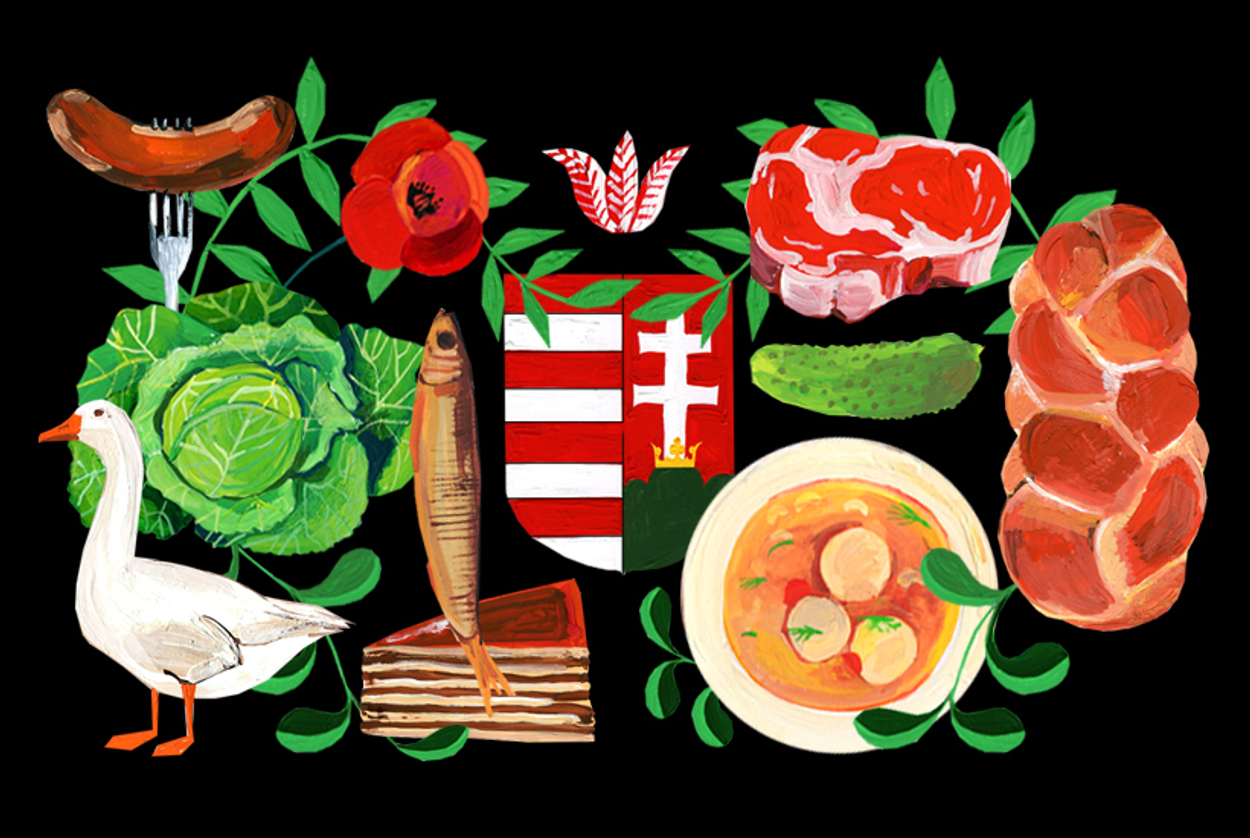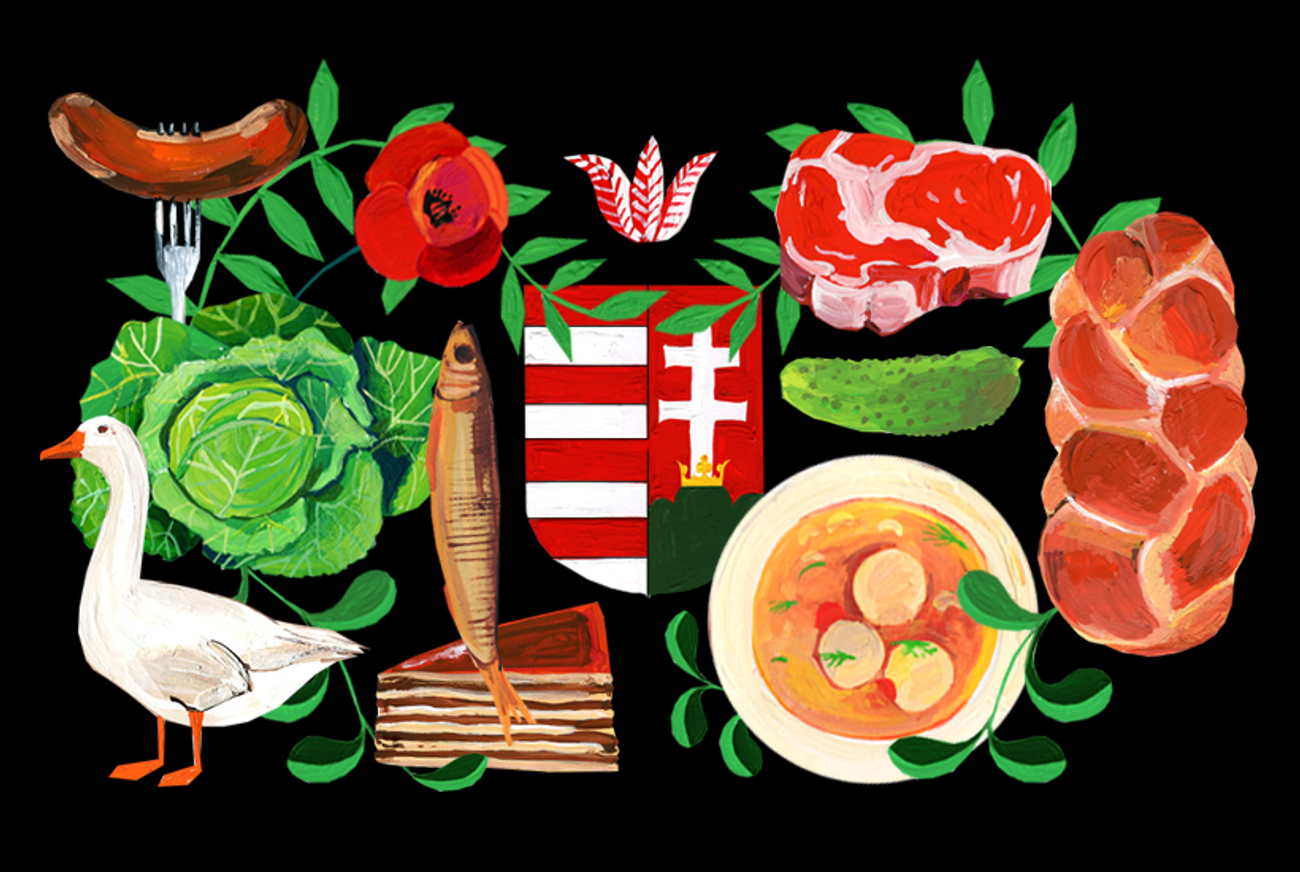Venerable Michigan Deli Traces Its Culinary Roots All the Way to Budapest
Zingerman’s has added a range of Hungarian items—from soups to pastries—to its menu, and now it’s leading European food tours




Anyone living within 200 miles of Ann Arbor, Mich., understands the magnetic pull of Zingerman’s. Some are drawn by the deli’s silky potato knishes, the custardy noodle kugel, or the Mario Batali-approved corned beef (the chef, who has a summer home in Michigan, has called Zingerman’s his “temple of deliciousness”). For others, it’s the tangy Jewish rye and chocolate-studded challah that emerge from Zingerman’s bakery, or the freshly cultured cream cheese from the creamery, that does it.
Even people living further afield have heard about Zingerman’s, which has transformed over the last 32 years from a single storefront deli into an empire of nine interconnected businesses that attracts visitors from all over the world. Critical to Zingerman’s success has been the company’s seemingly prophetic ability to look forward and stay on the cutting edge of emerging food trends, from baking its own artisanal bread to serving cold-brew coffee. These days, however, co-owner and founder Ari Weinzweig and his staff are looking backward—specifically, toward deli’s roots in Hungary.
The delicatessen as we know it traces its lineage to many locales across Eastern and Central Europe. As David Sax wrote in Saveur magazine, “The foods of the shtetls were regional … and when European Jews came to America, that variety characterized the delicatessens they opened. You got pastrami at the Romanian delicatessens, frankfurters at the German ones, and blintzes from the Russians.” Hungary, with its hearty stews and kosher salamis, added its own flavors and spices, particularly paprika, to the deli table. And as one of Europe’s most vibrant Jewish communities, complete with a vintage kosher butcher shop and restaurants serving classic dishes, Budapest today can still offer visitors and residents a taste of what deli once was, in its original setting.
To honor deli’s Hungarian heritage, Zingerman’s Bakehouse—the company’s onsite bakery and retail shop, which opened in 1992—has introduced a slew of traditional Hungarian foods to the menu over the last few years. Some of these breads, tortes, cookies, and soups are widely popular throughout Hungary. But others—particularly the flódni (a multilayered fruit-and-nut pastry), the matzo ball soup made with goose broth, and the sólet (the Hungarian take on cholent)—hold deep Jewish resonance. That was, after all, part of the point. The company’s founders are not of Hungarian origin themselves, and the eateries offer menus that are as likely to feature gelato and fried green tomatoes as pastrami or smoked whitefish spread. But Zingerman’s was originally founded as a Jewish deli, and the company’s soul continues to emanate from that foundation.
“We wanted to venture into something new as a staff, while introducing our customers to an unfamiliar culture through its food,” said Amy Emberling, a managing partner at Zingerman’s, who spearheaded the initiative. Hungary was chosen because it’s a country with robust bread, pastry, and soup traditions, which are the Bakehouse’s primary focuses.
“The food of Hungary is both fascinating and delicious,” said Weinzweig. “To me it is one of the most interesting and diverse cuisines in Europe.”
But equally important, said Emberling, was Hungary’s Jewish history: “One of the things that cinched the deal was discovering that Budapest has one of Europe’s largest thriving Jewish populations,” she said. So, over the past few years, Zingerman’s has worked to tap into Hungary’s Jewish culinary roots. Meanwhile, it is also helping other people discover Hungarian cuisine—not only by selling Hungarian items in its stores, but by leading culinary tours to the country.
***
As I (and others) have discussed in Tablet before, Hungary has a long history of Jewish food. Emberling learned this firsthand on three extended research trips she took with Weinzweig and several members of the Bakehouse staff over the course of four years. Their goal was to convince as many chefs, bakers, and home cooks as possible to meet with them and share their traditional recipes. So, they reached out to Carolyn and Gábor Bánfalvi, a husband-and-wife team who run the culinary tour company Taste Hungary to give them a true flavor of the country.
Whether touring Budapest or visiting the Tokaj wine region (which historically had a thriving Jewish community), the Zingerman’s team found itself inside some of the country’s best kitchens. Like the one at Rosenstein, an upscale, Jewishly inspired restaurant in Budapest. “We spent hours with founder Tibor Rosenstein listening to his remarkable life story and packing into his little kitchen to watch him prepare matzo balls,” Emberling said. “He did everything from scratch, including the matzo meal, which he made by smashing sheets of matzo into chunky crumbles with a rolling pin.” Also surprising: the hefty pinch of ginger that went into his matzo-ball batter, and the rich goose—not chicken—broth the matzo balls swam in. Both are traditional Hungarian variations of the familiar Ashkenazi soup.
The team also met with Rachél Raj, a pastry chef who has worked tirelessly to bring the Jewish confection flódni to wider consciousness. Her take on the pastry, which she shared with Emberling and the staff, includes thick layers of poppy seeds, chopped apple, and ground walnuts encased in pastry and slicked with homemade plum jam. “I had never seen it, or really anything like it, created in the United States before,” Emberling said of the flódni.
Back in Ann Arbor, the Zingerman’s crew slowly began to introduce these discoveries to customers. Most recently, this past February they added sólet to the menu; this rib-sticking bean and barley stew is served on Saturdays in homage to the dish’s Sabbath ties. While visiting Hungary, they sampled three different versions, including some decidedly non-kosher ones topped with pork. At Zingerman’s, they stick with the more traditionally Jewish accompaniment: smoked brisket, which is prepared for them at Zingerman’s Americana-inspired eatery, the Roadhouse. They also modified a few of the dishes to appeal to stateside taste buds. “A lot of Americans don’t care to have a mouthful of poppy seeds, so we made the layers of our flódni thinner,” Emberling said. “We also use a softer butter pastry instead of an oil-based one.”
The most surprising thing for Emberling was how personally fulfilling she found the trips to be. “My family is from different parts of Eastern Europe, so I wasn’t expecting our travels to feel like a homecoming,” she said. “But each time I went there, the seltzer on the tables, the pickles, all the flavors, it felt just like eating at my grandparents’ house.” Inspired by what she saw and learned, and guided by Zingerman’s commitment to educating as well as feeding, Emberling created multiple opportunities for customers to engage on a deeper level with Hungary’s cuisine.
Since launching the first dishes on its menu, the Bakehouse has held several public tastings and academic talks. “We serve pálinka [fruit brandy] and appetizers and give a lecture about everything we experienced,” Emberling said. Zingerman’s hands-on teaching bakery, meanwhile, offers one class focused on Hungarian pastries, and another on savory dishes like goulash. It also invites guest speakers for events, including the Bánfalvis, who visited Ann Arbor from Budapest this summer for a cooking class, a wine tasting, and an informal dinner. “It has been a great partnership for us,” Gabor Bánfalvi said. “There is a lot of mutual inspiration.”
Last year, Zingerman’s went a step further: In addition to bringing Hungary to its customers, the deli decided to bring its customers to Hungary. Zingerman’s and Taste Hungary co-organized a food tour of the country in 2013, and are planning a repeat for the spring of 2015. “I have traveled a lot and still found Hungary to be incredibly unexpected, so I thought it would appeal to others,” Emberling explained. On the first tour, 15 food enthusiasts joined her for the 10-day trip, visiting many of the same kitchens that inspired Zingerman’s Hungarian menu offerings.
The 2013 tour covered Jewish and non-Jewish stops, including a visit to Budapest’s largest synagogue. But the highlight, Emberling said, was a traditional meal at Raj’s mother’s gracious Budapest apartment. A renowned home cook in the community, Raj’s mother served a menu of gefilte fish, roasted duck with eggplant, slow-cooked smoked beef tongue, cold goose liver, carrot and dried fruit tzimmes, and—of course—flódni. The meal started off with a shot of her bracing homemade pálinka. “The food was really familiar, particularly for people on the trip with Jewish ancestors,” Carolyn Bánfalvi said. “It ended up being pretty emotional for some of the participants.
For the next tour, Emberling anticipates a similar itinerary punctuated by visits to more food producers, like a poppy seed or chestnut farm or processing factory. “We try to view food from all levels and through all lenses,” Emberling said. “And as a culture and cuisine, Hungary is ever-evolving with so much to offer.”
***
You can help support Tablet’s unique brand of Jewish journalism. Click here to donate today.